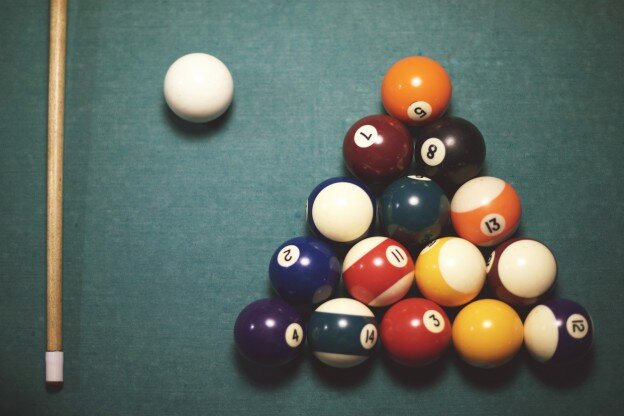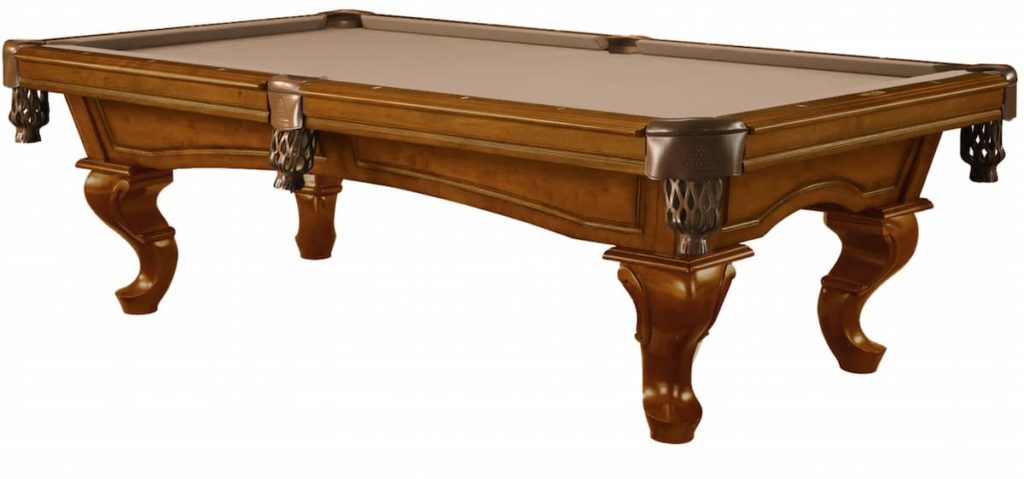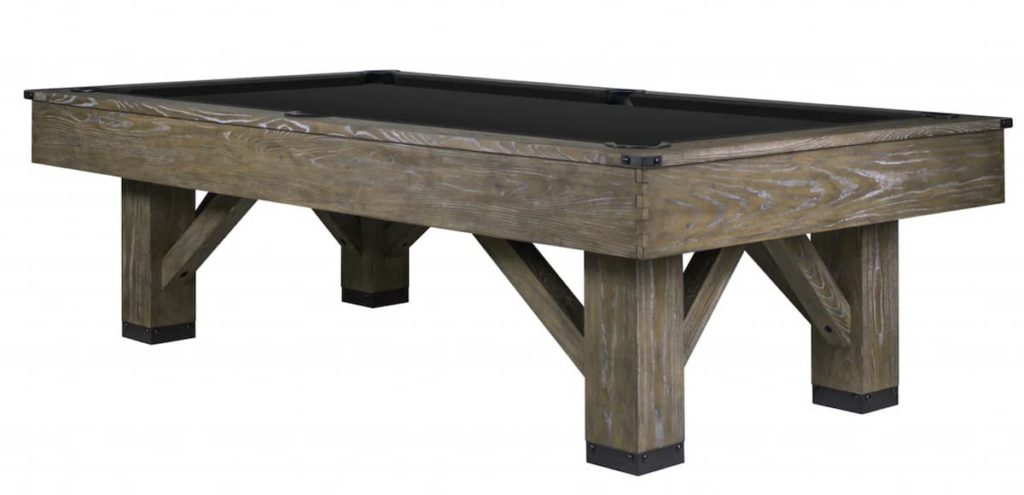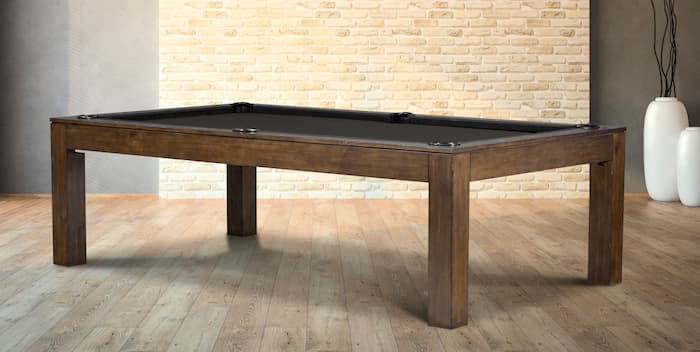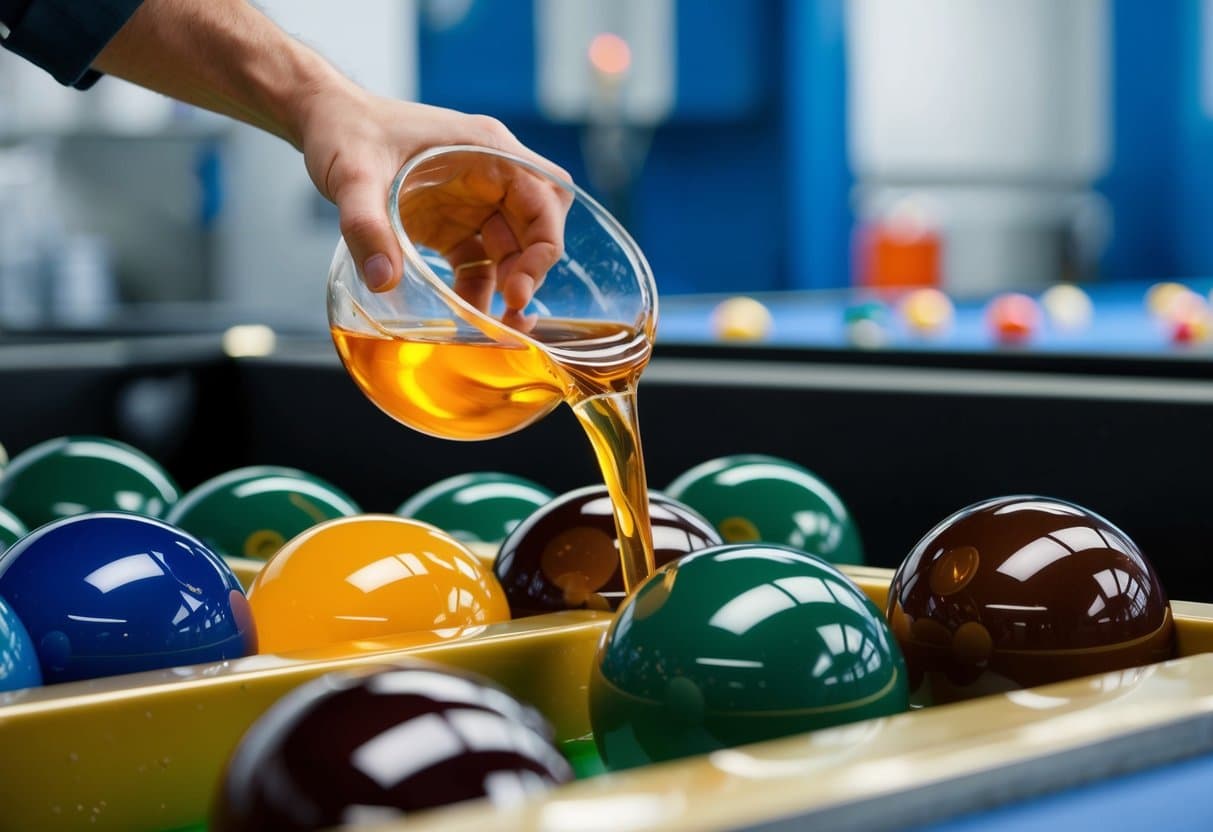You’ve decided to take the plunge and invest in a pool table. Congratulations! Now it’s time to make sure you get the right pool table size for your room as well as what’s best suited to you. Whether you’re a seasoned pool shark or a novice player, finding the right combination of room size and table size will help you enjoy your new pool table to the fullest.
For decades, pool tables have been a promise of life-long entertainment. Despite the abundance of modern distractions, they remain a popular choice amongst bar room owners and home game room enthusiasts alike. While room size is an important factor when selecting a pool table, it’s not the only thing to consider. Choosing the right size pool table for your room will help you maximize your playing space and enjoy hours of friendly competition.
That is why we are here to take the worry out of your decision by providing you with criteria that will help you make the right choice. By the end of this article, you should know everything you need to select the perfect size pool table for your room.

What’s a regulation-size pool table?
Many people want to know what the dimensions are of a regulation-size pool table. The truth is, “regulation size” actually refers to the proportion of the width and length of the table. So technically, to be a “regulation-sized” table, the length must double the width. So a 7-foot table can be a regulation-size table as long as the dimensions are 39″ X 78″. Read further down to see what makes amateur, standard and professional size tables (hint: they match with 7, 8 and 9-foot tables!)
Minimum Space Needed for Each Size Pool Table
When picking out the right size of a pool table, room size is important in making your decision. You will want to ensure you have room to move around comfortably, make all the necessary shots, and fully enjoy the game.
The room you are planning on using for your pool table should:
- Be able to house the pool table size of your choice
- Have a minimum clearance of 4ft on all sides (including room entry)
- Have a play area to take shots and walk around the pool table comfortably
- Allow room to extend cue length when taking shots
Therefore,
Play area = Pool table size + (Cue length * 2)
For example, if you want to equip your room with an 8-foot bar-style pool table (playing surface of 44″ x 88″) and use a 52″ pool cue, the length and width of the room should be no less than:
Length: 88″ + (52″*2) = 192″ (16feett)
Width: 44″ + (52″*2) = 148 ” (12 feet 4 inches
You can use the same equation for ALL table sizes. Here is a chart to map it out quickly.
Pool tables size chart to show pool table room size & dimensions needed
TABLE SIZES | PLAYING SURFACE | MIN. ROOM SIZE BASED ON CUE LENGTH | ||
| 48″ | 52 | 58″ | ||
| 7 FT. | 39” x 78” | 11’3” x 14’6” | 11’11” x 15’2” | 12’11” x 16’2” |
| 8 FT. | 44” x 88” | 11’8” x 15’4” | 12’4” x 16’ | 13’4” x 17’ |
| PRO – 8 | 46” x 92” | 11’10” x 15’8” | 12’6” x 16’4” | 13’6”x 17’4” |
| 9 FT. | 50”x 100” | 12’2” x 16’4” | 12’10”x 17’ | 13’10” x 18’ |
To ease the room size calculation, you only need to remember one simple formula: room size = table size + Cue Times Two. This is commonly known as the “Cue Times Two” method. All you need to do is add the length of your cue twice to the room size of your pool table, and you will get the room size you need to play comfortably.
Some people also prefer adding 3″ on all sides to allow room for movement and shots. The room size should be able to comfortably house the table without compromising on room entry and exiting, as well as room for the players to move around the table freely.
What to Consider When Choosing Between 3 Standard Pool Table Sizes
Apart from the room size, some technical and functional qualities play an important role in choosing the right pool table size. Three standard sizes are available – 7-foot, 8-foot, and 9-foot tables. Let’s take a look at the technical qualities of each size:
The 7-Foot Pool Table Characteristics & Dimensions::
Usually referred to as a “bar box” or “pub table”, a 7-foot pool table is the smallest standard size. They are commonly used as coin-operated fixtures making them ideal for bars, pubs, and recreational centers. While you won’t see this table being used in professional tournaments aired on ESPN this size table is used in the World Eightball Pool Federation (WEPF) and other amateur leagues.
- Table Size: 3.5′ x 7′ (42″ x 84″)
- Playable Surface: 39” x 78”

The 8-Foot Pool Table Characteristics & Dimensions::
The 8-foot pool table is the most popular size for homes and offers a roomier playing field. It is the standard size for tournament play and leagues. With roomier dimensions, the 8-foot table gives players more room to move and provides a bigger target area. If you ask a pool shark which size they prefer, they will most likely recommend an 8-foot table. Why? Because it doesn’t cluster and bunch the balls close together, leaving room to play a larger variety of shots than a 7-foot table.
The WPA (World Pool-Billiard Association) has approved an 8-foot pool table size for leagues and tournaments-although it is still only considered a “standard” table as opposed to the official professional-sized 9-footer.
- Table Size: 4′ x 8′ (48″ x 96″)
- Playable Surface: 44” x 88”
The 9-Foot Pool Table Characteristics & Dimensions:
The 9-foot pool table is the roomiest option and is used in professional tournaments. It requires more room than other tables but offers a larger playing area that allows room to maneuver the cue ball around other balls. The larger size creates a challenge as the pockets are further from the edges of the table, making them harder to pocket.
- Table Size: 4.5′ x 8′ (54″ x 96″)
- Playable Surface: 50” x 100”
Which Table is Most Suited to My Needs?
Choosing the right pool table size depends on many factors like room size, layout, skill level, playing style, and personal preferences. We have discussed the technical qualities of the 7-foot, 8-foot, and 9-foot tables. Now let’s look at why someone would choose each table in terms of playing ability and experience:
7-Foot Table:
Although you will find 7-foot tables in some amateur tournaments, their limited room size and playing area make them better suited to more casual players, beginners, or novice players with limited room space. On a 7-footer, balls bunch up a lot., so for experienced players, a 7-footer might feel “cramped” or “stuffy” because of the constant cluster of balls due to the smaller playing area.
“Long shots” are virtually non-existent, which means less skill is required to sink balls. It’s not uncommon to see coin-operated bar tables have larger pockets to encourage quicker play.
With this in mind, this type of table is best suited for those who are less competitive and looking to play with friends or family or just to have a bit of fun. You can still comfortably play 8-ball or 9-ball on a 7-foot table. Keep in mind that if you’re naturally competitive and like challenges you may outgrow your table as your ability and skills grow stronger.
8-Foot Table:
The 8-foot table size is the most common choice for homes. Its room size requirements and the playing area are a little more generous, allowing more room to play shots than the 7-foot table while still being relatively compact for most room sizes.
The 8-foot table is suitable for all skill levels, from beginner to experienced. This size pool table is much more forgiving, allowing room for error and space to play more challenging shots. The larger playing area gives room for a more complete game, room for longer and more difficult shots, room to keep the table clear of balls, room to play out of trouble, room to space out balls when breaking, room to bridge up, room for skill and room for a bit of luck.

9-Foot Table:
The 9-foot table is the size most commonly used in professional tournaments. It offers the most challenging and perhaps a rewarding experience than its smaller counterparts, allowing for a larger playing area and room to play longer and more difficult shots.
Players execute purposeful strokes on a 9-foot table, from soft safeties to loud and powerful breaks. Mastering the large playing area of this size pool table requires developing a strong and effective stroke, precise aim, and great control of the cue ball in terms of speed and angle.
The 9-foot table best suits experienced players, most commonly used in tournaments and competitions. So if you’re looking to be a professional pool player or just to challenge yourself and experience the most realistic game of pool without having to visit a bar room or tournament room, then the 9-foot table is the one for you.
How to Choose The Right Size Cue Stick
Pool cues can improve your playing experience, especially when you choose the right size or, worse when you get the wrong one. A good cue should feel comfortable, fit in your hands, and reach the target easily. The size of the cue that you need depends on the following:
- Your height
- The weight of the stick
- Your pool table size
- Your preference for comfort
- Materials used
- The cue tip diameter
- And Shaft Diameter
Your Height:
The length of the cue should be proportional to your height. A good rule of thumb is to try a cue that is no shorter than the distance between your chin and the floor and no longer than the space between your chin and your outstretched arms.
Weight:
The weight of the cue should feel comfortable in your hands. Generally, heavier sticks provide more power and control to your shots, while a lighter one can be more maneuverable. It is best to get a feel of the stick in your hands before you purchase it, so try handling a few different weights to find the one that works best for you.
Table Size:
The room size and table size you choose affect the overall length of your cue. If you are playing on a full-size table, then you should aim for a stick between 58″ and 63″. For smaller tables, the cue should be between 48″ and 54″.
Your Preference and Material Used:
Both are geared more toward your comfort and playing style. The material used in a cue can affect the balance, feel, and flexibility of your shot. Generally, hardwood cues are heavier, while composite materials are more lightweight. Additionally, grips come in a variety of shapes and sizes, so you can find the one that fits in your hand the most naturally.
Cue Tip Diameter:
The cue tip can affect your accuracy and playstyle. Smaller tips are more accurate but less powerful, whereas larger tips can give you more power in your shots. For more advanced players, a small cue tip diameter puts a side spin on the ball and adds more control. Beginners might prefer a larger tip diameter to get the ball rolling faster and with more power so it can reach the pocket more easily.
Shaft Diameter:
Your hand may also determine what shaft diameter you need. Since the shaft is the longest part of the cue and you’ll be gripping it most of the time, ensure that it fits comfortably in your hands and that you can easily wrap your fingers around it. Most cues come in a standard size of 12-13mm, with an increment of 1/4 mm.
A thicker shaft diameter will provide more stability and accuracy, while a thinner shaft will provide more power and maneuverability. Remember that you can always replace the shaft of your cue if needed, so you don’t have to find the perfect size immediately.
What is the Right Pool Table Size for You?
Choosing the right size pool table and cue stick can be tricky to get just right, but it is essential for optimal performance. Start by measuring the room size and the playing area required for your chosen table size before selecting your table. Then, take into account your height and preferred playing style when selecting a cue stick. Remember to test out different weights, materials, tip diameters, and shaft diameters until you find the one that fits your hand and playing style best. Once you have all the necessary measurements and preferences figured out, you can then decide which pool table and cue stick are right for you.
It’s important to consider where your billiards table will go in your house before you pick it up. When picking the right spot, choose a part of your home with even flooring. Depending on its size, your table could potentially weigh a ton. So take your time picking the right spot so you don’t have to move your table any time soon!
The size of your billiards table impacts the difficulty level. Think of an eight-foot table as being of intermediate difficulty. Longer tables can increase the difficulty as they promote longer and more difficult shots, whereas, smaller sizes cause the balls to become more clustered.
Unfortunately, many of us have space restrictions that put limitations on how large the billiards table can be. You will need approximately six feet of space on each side of the table to provide adequate room to make your shots. If your billiards table is located too close to the surrounding walls, be prepared for scuff marks on your walls.
At Canadian Home Leisure, we proudly offer a wide selection of high-quality billiards tables, so you can find the best table for your needs. And we don’t stop there, even after purchase our services don’t stop there. If you need your billiards table serviced, we are at your service!

